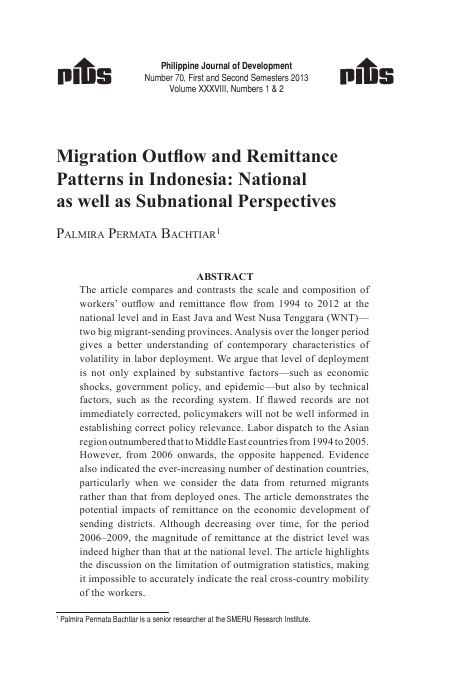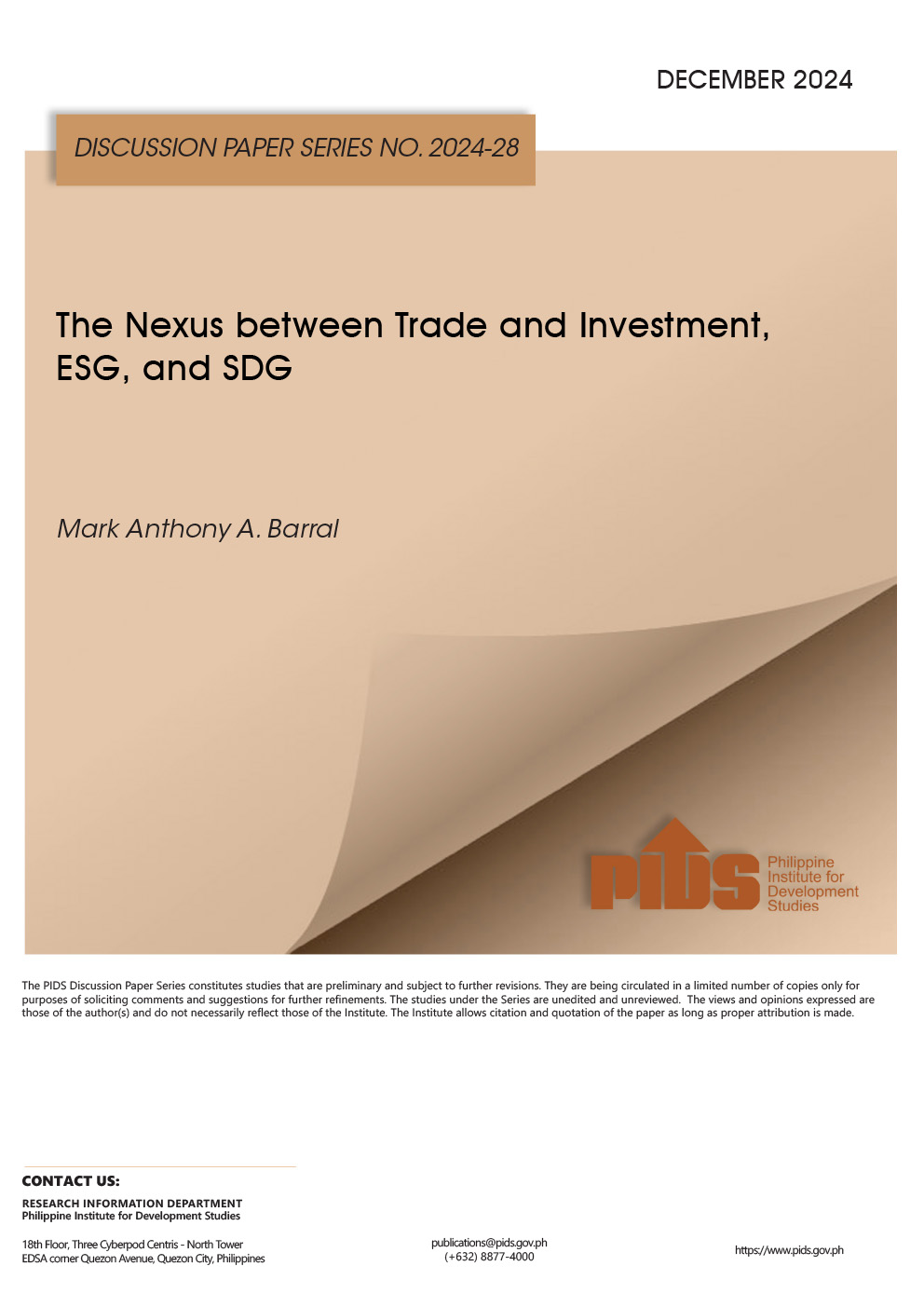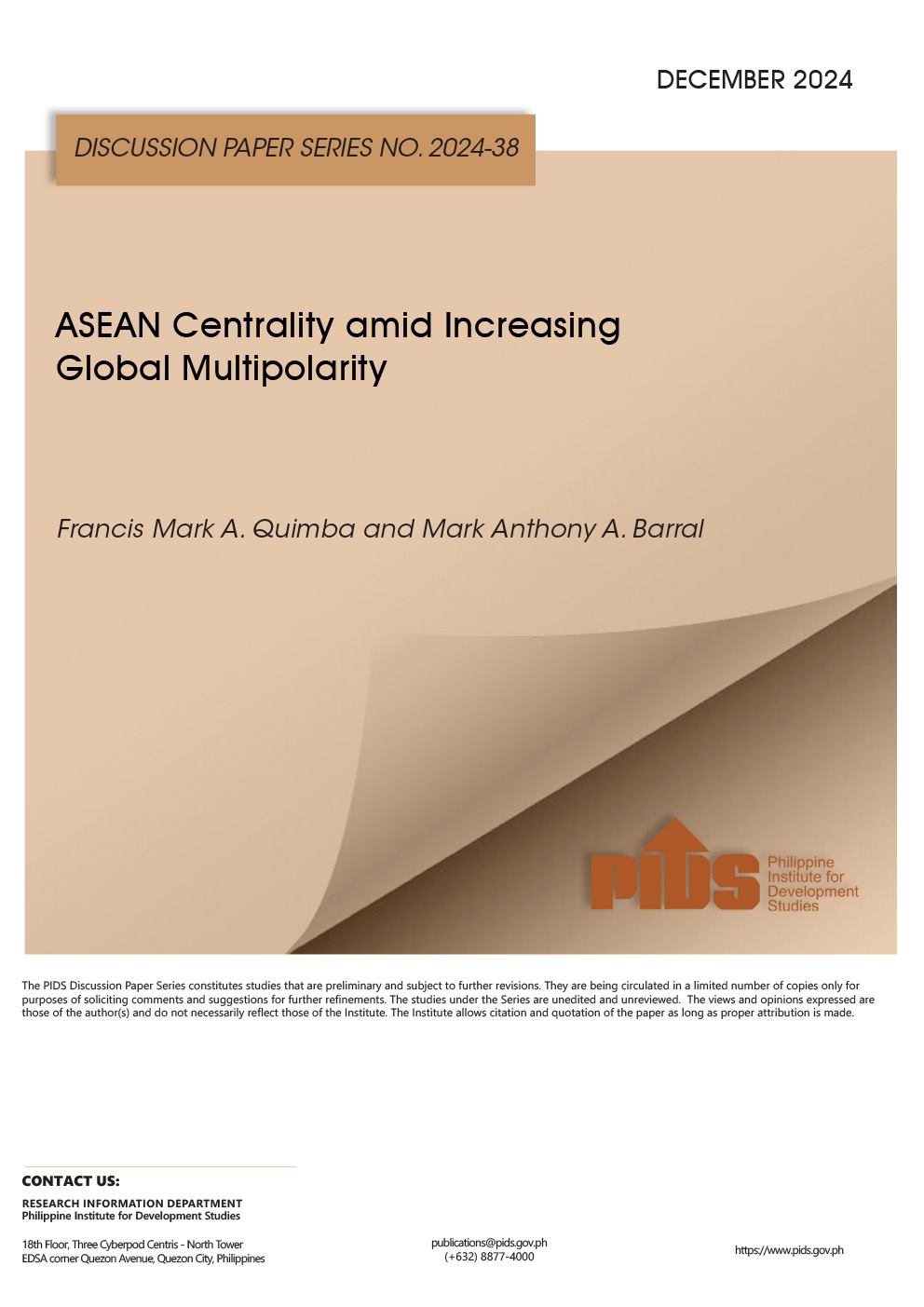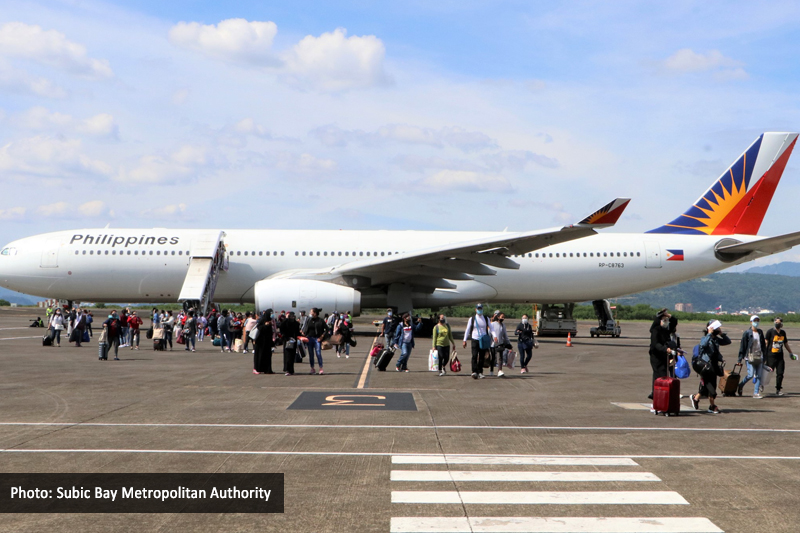The article compares and contrasts the scale and composition of workers` outflow and remittance flow from 1994 to 2012 at the national level and in East Java and West Nusa Tenggara--two big migrant-sending provinces. Analysis over the longer period gives a better understanding of contemporary characteristics of volatility in labor deployment. We argue that level of deployment is not only explained by substantive factors--such as economic shocks, government policy, and epidemic--but also by technical factors, such as the recording system. If flawed records are not immediately corrected, policymakers will not be well informed in establishing correct policy relevance.
Labor dispatch to the Asian region outnumbered that to Middle East countries from 1994 to 2005. However, from 2006 onwards, the opposite happened. Evidence also indicated the ever-increasing number of destination countries, particularly when we consider the data from returned migrants rather than that from deployed ones. The article demonstrates the potential impacts of remittance on the economic development of sending districts. Although decreasing over time, for the period 2006—2009, the magnitude of remittance at the district level was indeed higher than that at the national level. The article highlights the discussion on the limitation of outmigration statistics, making it impossible to accurately indicate the real cross-country mobility of the workers.













